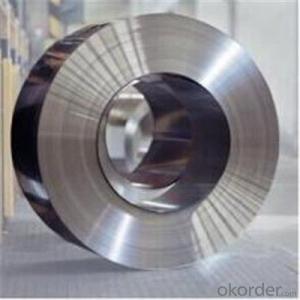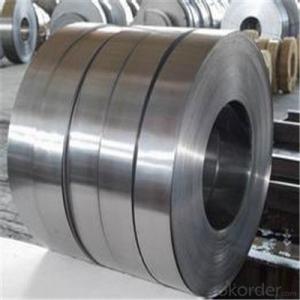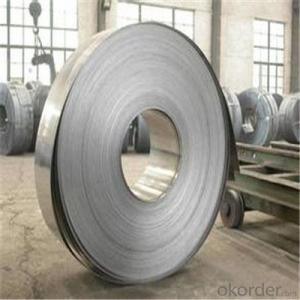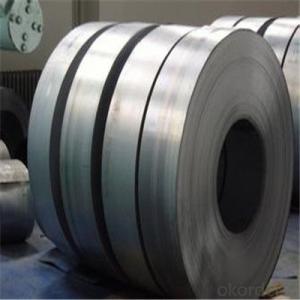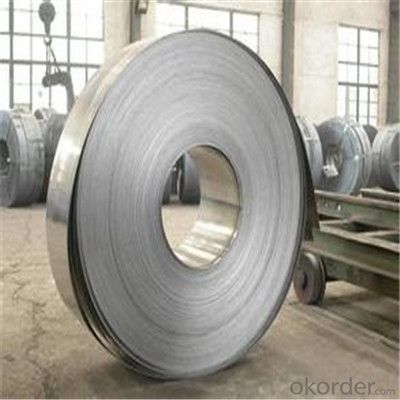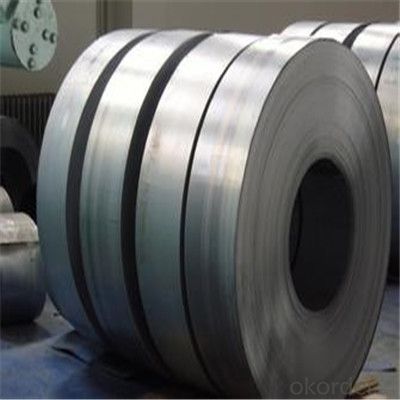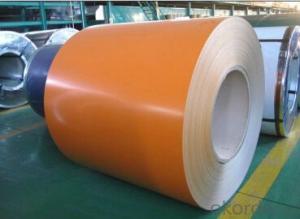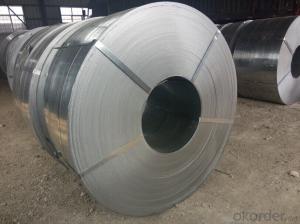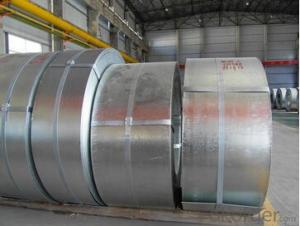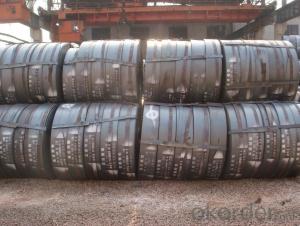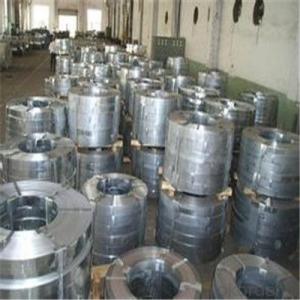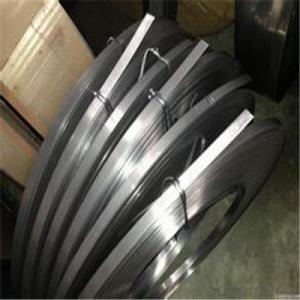Hot and Cold Carbon Rolled Steel Strip Coils Q195 Q235
- Loading Port:
- Qingdao
- Payment Terms:
- TT OR LC
- Min Order Qty:
- 33 m.t.
- Supply Capability:
- 122222 m.t./month
OKorder Service Pledge
OKorder Financial Service
You Might Also Like
Specification
Description of Steel Strip Coils:
Our products mainly used in Construction area, Industry area,kitchen tools and medical tools and so on.Construction area: putty knife, plastering trowel, long handle putty knife, bricklaying trowel ect.Industry area : car pares, knife parts, barral parts, band saw blade, electric machine parts and so on. Kitchen; knife, food container, pot, scraper, bottle, kettle cover, ect.The producets also used in medical, shoe making and other area
Festures of Steel Strip Coils:
1. Each coil is closely covered by oil paper or plastic film.
2. Outside it is firmly packed with sack cloth or compound paper.
3. Steel strap or PP strap to pack the outside to ensure safety.
4. On/about 1000kgs to be packed with one wooden pallet.
5. Strips can be loaded to 20'FCL without pallet if required by customer.
6. LCL shipment can also be arranged once required by the customer.
Specifications of Steel Strip Coils:
| Description | Hot Rolled Steel Strip |
| Brand | Tianjin Metallurgical No.Steel Group |
| Specification | 1.2-6.0mm*70mm |
| Standard | AISI,ASTM,BS,DIN,GB,JIS |
| Material | Q195,Q215,Q215B,Q235,Q235B |
| Application | Widly used in welding steel pipes, and bicycle making etc. |
| Certificates | BV,SGS,ISO etc. |
| MOQ | 20 tons or according to customers’ requirement. |
| Port of Delivery | Tianjin Port of China |
| Remarks | We can provide qualify goods,competitive price and speedy delivery |
Images of Steel Strip Coils:
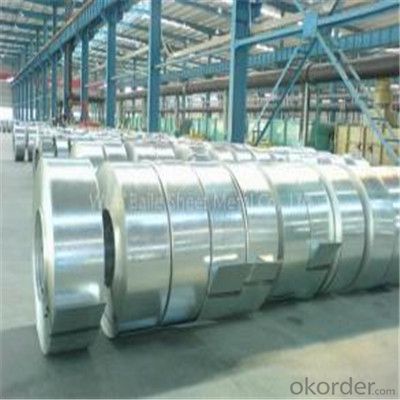
FAQ
1.What's your MOQ?
25MT, it is for one container.
2.Do you have QC teams?
Yeah, sure, our QC team is very important, they will keep the quality control for our products.
3. What's your normal delivery time?
Our delivery time about 10-20days for standard sizes, if you have other requirements like hardness and width ,it is about 20-40days.
- Q: Can steel strips be used in the production of watch cases?
- Yes, steel strips can be used in the production of watch cases. Steel is a commonly used material for watch cases due to its durability and resistance to corrosion. Steel strips can be shaped and formed into the desired watch case design, providing a strong and reliable housing for the watch components.
- Q: How do steel strips contribute to noise reduction in various applications?
- Steel strips contribute to noise reduction in various applications through their ability to absorb and dampen sound waves. When used as a soundproofing material, steel strips effectively reduce noise transmission by minimizing vibrations and eliminating resonance. One way steel strips contribute to noise reduction is by acting as a barrier. When properly installed, steel strips create a physical barrier that prevents sound waves from passing through. This is particularly useful in applications such as building construction, where steel strips can be used to line walls, floors, and ceilings, effectively blocking out external noise sources. Additionally, steel strips can absorb sound energy. By incorporating materials with sound-absorbing properties, steel strips can effectively absorb and dissipate sound waves. This is achieved through the conversion of sound energy into heat energy. The unique composition of steel strips allows them to convert sound waves into vibrations, which are then dissipated as heat energy, reducing the overall noise level. Furthermore, steel strips contribute to noise reduction by damping vibrations. Vibrations can be a significant source of noise in many applications, such as industrial machinery or vehicle engines. Steel strips have the ability to absorb and dampen these vibrations, preventing them from propagating and reducing the resulting noise. This is achieved through the inherent stiffness and density of steel, which helps to dissipate vibrations and minimize their impact on the surrounding environment. Overall, steel strips play a crucial role in noise reduction across various applications. Whether used as a barrier, sound absorber, or vibration damper, steel strips effectively contribute to creating quieter and more comfortable environments by minimizing noise transmission and improving overall acoustic performance.
- Q: How are steel strips used in the textile industry?
- Steel strips are used in the textile industry as a part of the machinery for various purposes such as guiding, tensioning, and supporting fabrics during the manufacturing process. They help to ensure smooth and precise movement of fabrics through the machines, resulting in better quality and efficiency in textile production.
- Q: How are steel strips cleaned and degreased?
- Steel strips are typically cleaned and degreased through a multi-step process. Firstly, they are often subjected to a thorough mechanical cleaning to remove any loose dirt or debris. Then, the strips are dipped into a chemical bath containing a degreasing agent, such as alkaline cleaners or solvents, which help dissolve and remove any oil or grease present on the surface. Alternatively, they may be sprayed with high-pressure jets of water mixed with appropriate detergents. Finally, the strips are rinsed with water to remove any remaining cleaning agents, dried, and prepared for further processing or storage.
- Q: How do steel strips perform in terms of corrosion resistance?
- The presence of alloying elements, such as chromium and nickel, in steel strips generally results in good corrosion resistance. These elements create a protective layer known as a passive film on the surface of the steel, acting as a barrier against corrosive substances and preventing them from reaching the steel below. The thickness and composition of this film can vary depending on the specific steel grade and environmental conditions. Stainless steel, among other steel strips, displays exceptional corrosion resistance and is highly resistant to rusting, staining, and other forms of corrosion. It is commonly employed in environments where exposure to moisture, chemicals, or extreme temperatures is a concern, including marine applications, food processing industries, and architectural structures. However, it is important to acknowledge that the corrosion resistance of steel strips can be affected by various factors, such as the presence of impurities, the quality of the surface finish, and the specific conditions in which the steel is exposed. In some instances, additional protective coatings or surface treatments may be necessary to enhance the corrosion resistance of the steel strips. In conclusion, steel strips are generally recognized for their good corrosion resistance. Nevertheless, the effectiveness of this resistance relies on multiple factors and should be evaluated within the context of the particular application and environment in which they will be utilized.
- Q: How are steel strips priced and sold?
- Steel strips are typically priced and sold based on several factors. Firstly, the cost of the raw materials used to produce the steel strips, such as iron ore and other alloys, plays a significant role in determining the price. Fluctuations in the prices of these materials can directly impact the pricing of steel strips. Additionally, the manufacturing process and overhead costs involved in producing steel strips influence their pricing. This includes expenses related to labor, energy, equipment, and transportation. Quality standards and certifications, such as ISO certifications, can also affect the price as they ensure the product meets certain criteria. Market demand and competition also play a role in pricing steel strips. Higher demand for steel strips can lead to increased prices, especially when supply is limited. Conversely, if there is low demand or excess supply, prices may be more competitive. Steel strips are typically sold through various channels, including steel service centers, distributors, and directly from manufacturers. Steel service centers and distributors act as intermediaries, purchasing steel strips in bulk from manufacturers and reselling them to end-users. They often offer additional services such as cutting, slitting, or customizing the steel strips based on customer requirements. Direct sales from manufacturers are also common, particularly for larger orders or when customers have specific preferences or requirements. Manufacturers may have their own sales teams or work with agents or representatives to facilitate the sale of steel strips. In summary, steel strip pricing is determined by factors such as raw material costs, manufacturing expenses, quality standards, market demand, and competition. The sales of steel strips can be carried out through steel service centers, distributors, or directly from manufacturers.
- Q: How are steel strips used in the manufacturing of storage racks?
- Storage racks commonly utilize steel strips for their durability and strength in the manufacturing process. These strips are typically molded into different shapes and sizes to serve as the framework and support structure of the rack. They fulfill various functions such as upright posts, horizontal beams, and cross braces, providing stability and load-bearing capacity. Steel strips are renowned for their high strength-to-weight ratio, making them an ideal option for storage racks that need to bear heavy loads. They are often crafted from robust steel alloys capable of withstanding substantial weight and pressure without bending or warping. Throughout the manufacturing process, steel strips are cut, shaped, and welded together to form the desired rack structure. They are frequently coated with protective finishes or paints to prevent corrosion and extend their lifespan. Additionally, galvanization can be applied to enhance resistance against rust and other forms of degradation. Once assembled, the steel strips create a strong and reliable framework that can support a wide range of items. These racks are commonly employed in warehouses, retail stores, and other industrial settings to facilitate storage and organization. By ensuring the rack can withstand the weight of stored items and remain stable, the steel strips reduce the risk of accidents or damage. In summary, steel strips are essential components in the manufacturing of storage racks as they provide the necessary strength and durability to support heavy loads. Their versatility and adaptability have made them a popular choice across various industries where efficient storage and organization are of utmost importance.
- Q: What are the different methods for shearing steel strips?
- There are several methods for shearing steel strips, including mechanical shearing, hydraulic shearing, and guillotine shearing. Mechanical shearing involves the use of a mechanical press or shear that cuts the steel strip using a blade. Hydraulic shearing, on the other hand, uses hydraulic force to operate the shear and cut the steel strip. Guillotine shearing is a type of mechanical shearing where a moving blade cuts through the steel strip in a straight line. Each method has its own advantages and is chosen based on factors such as the thickness of the steel strip and the required precision of the cut.
- Q: Can steel strips be used for making automotive exhaust systems?
- Yes, steel strips can be used for making automotive exhaust systems. Steel strips are commonly used due to their durability, heat resistance, and ability to withstand the corrosive conditions of the exhaust system.
- Q: How are steel strips rolled?
- To achieve the desired thickness, shape, and surface finish, steel strips undergo a series of hot and cold rolling processes. The process commences with heating a large slab of steel above its recrystallization temperature in a hot rolling mill. It is then passed through rollers to gradually decrease its thickness. The resulting steel strip is then coiled and cooled. Next, the coiled strip goes through a cold rolling mill, which consists of multiple stands of rollers. This mill gradually reduces the thickness of the steel strip to the desired level. Cold rolling not only reduces thickness but also enhances surface finish, mechanical properties, and dimensional accuracy. During the cold rolling process, the steel strip undergoes continuous annealing to eliminate residual stresses and enhance ductility. Annealing involves heating the strip to a specific temperature and then slowly cooling it down. This process refines the microstructure of the steel, leading to improved overall quality. Following cold rolling and annealing, further processes such as skin pass rolling or temper rolling may be applied to the steel strip. Skin pass rolling involves a light reduction in thickness to refine surface finish and remove defects. On the other hand, temper rolling imparts specific mechanical properties and eliminates residual stresses by passing the steel strip through a series of rolls. Finally, the steel strip is typically coated or treated to prevent corrosion or enhance surface properties. This can be achieved through processes like galvanizing, which applies a layer of zinc to protect the steel from rusting. In conclusion, steel strips undergo a combination of hot and cold rolling processes to gradually reduce thickness and improve surface finish and mechanical properties. Additional processing and treatment are carried out to achieve specific characteristics and prevent corrosion.
Send your message to us
Hot and Cold Carbon Rolled Steel Strip Coils Q195 Q235
- Loading Port:
- Qingdao
- Payment Terms:
- TT OR LC
- Min Order Qty:
- 33 m.t.
- Supply Capability:
- 122222 m.t./month
OKorder Service Pledge
OKorder Financial Service
Similar products
Hot products
Hot Searches
Related keywords
